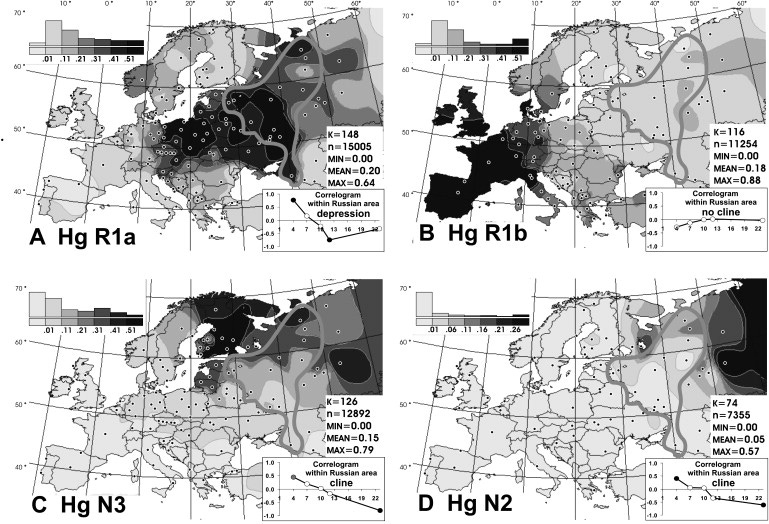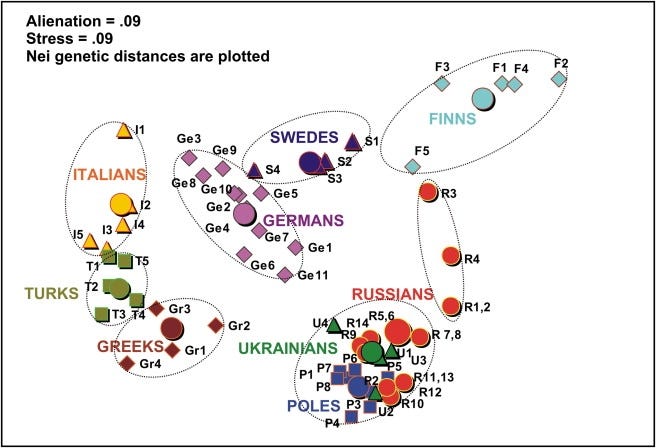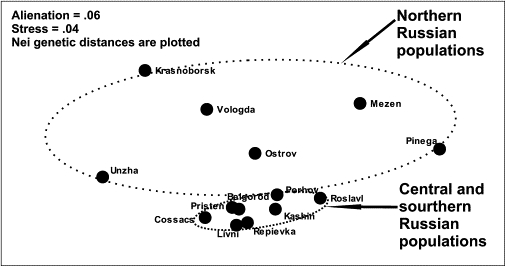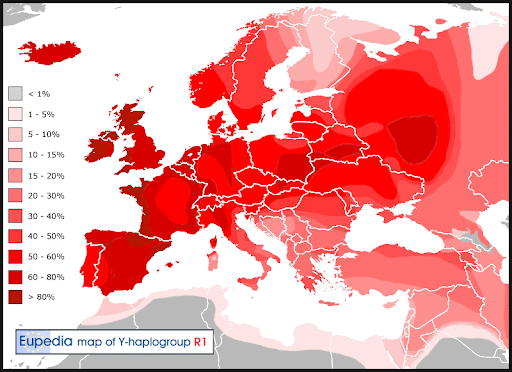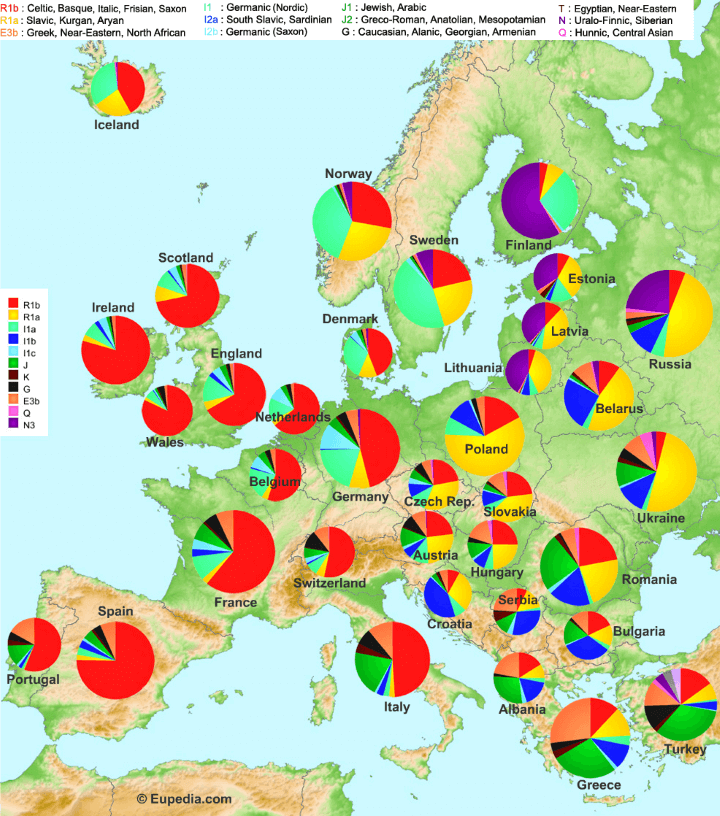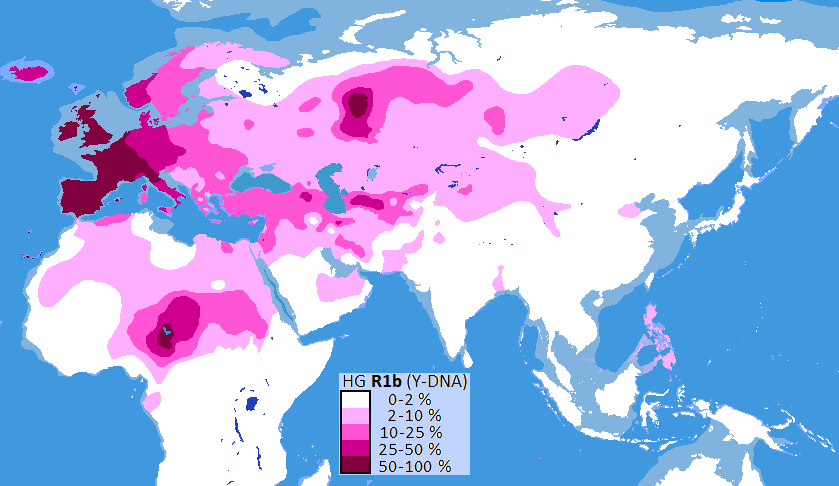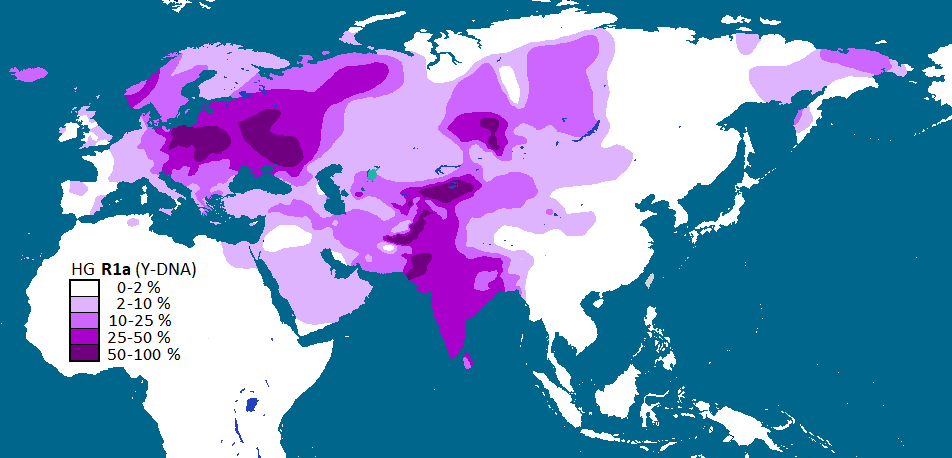Just How Asiatic are Russians?
A Genetic Analysis of Russian Asian Ancestry
This is a huge topic as often Russians are pegged as Asiatic and it’s not entirely false. In this part of the series I will be exploring the genetics part of this phenomenon. I will look at the Finno-Ugric and Asian component of the Russian ancestry, explore the Mongolian connection and end the article by looking at Ancient North Eurasians. Following parts may potentially touch historical, linguistic and cultural influences of Asia upon the Russians.
I’ll start with the most simplest, which is that physical anthropology found that:
The occurrence of a straight nasal profile among ethnic Russians is 75%, which is higher than the European average (70%).
The occurrence of a concave nasal profile among ethnic Russians is 9%, which is close to the average values for Western and Central Europe (10%).
The occurrence of Epicanthic fold among ethnic Russians (common Asiatic trait) is 0.14% according to Viktor Bunak’s expedition into Northern Russia or among just 12 out of 8,500 people.
At the same time, it is also important to know that just like the German, English, French and Italian populations, the Russian population is heterogenous. It has a massive highly homogenous Central Russian core representing over 65% of the Russian population, the Southern core representing around 20% of the population which is largely a Russian, Ukrainian and Cossack hybrid and the Ural and Northern Russian population representing approximately 15% with small regional particularities like the Pskovian Russians who are half ethnically Baltic. The Siberian population is largely a synthesis of all these Russian groups in addition to many European settlers, most notably the Ukrainians, Jews, Germans and Poles.
Central Russians are generally under one percent Asian, Southern Russians are above 1% but below 2% (a proxy number through adding Cossacks + Ukrainians) whereas Northern Russians are at least 4% Asian (like Karelians and Finns), but that may go up to 10% (like Mordovians or Western Komi but not yet quite like Tatars or Udmurts).
Now, Haplogroup studies clearly indicate that majority of Russians along with Belarussians, Ukrainians and Poles carry the Slavic founding stock R1a haplogroup, and while this may not be indicative of admixture, it is very much indicative of paternal descent.
In other words, Central, Pskovian and Novgorodian and Southern Russians are the direct descendants of the Slavic male conquerors, whereas Northern Russians along with Balts, Finns and other Finno-Ugrics typically carry the N3 haplogroup are descendants of Ancient North Eurasians (who I will talk about behind the paywall), who would later intermix with Russians, Estonians, Finns and other Europeans but keep their haplogroup.
This creates a clear contrast between the genetic history of Northern Russians from the rest of Russians, many of whom are genetically closer to Finns than to Central and Southern Russians. As a result, there is more variation within Russians (Northern, Central, Southern) than there is between Russians and Eastern and Western Slavs.
At the same time, the genetic difference between Southern and Central Russian is not as pronounced as the genetic difference between Northern Russians and the rest of Russians, even though Southern Russians, Ukrainians, and Cossacks especially are also not pure.
Another haplogroup study looking exclusively at the single most important genetic axis of variation in the haplotype dataset (PC1) has divided a sample of 4145 Russians living in three big cosmopolitan cities into six groups:
“Interestingly, Finnish samples were the closest to Russians from HGDP and cluster 4, while cluster 5 was close to Ural populations (Fig. 3d). The only Russian cluster within the Asian branch is cluster 6, which is further supported by its close proximity in principal component space to Central Asia (Supplementary Fig. 21).”
[Asian-Like] Cluster 6 represents about 2.7% of self-identified Russians in Samara, Orenburg and Saint-Petersburg
[Volga-Ural-Like] Cluster 5 represents about 8% of self-identified Russians in Samara, Orenburg and Saint-Petersburg
[Finnish-Like] Cluster 4 represents about 13.5% self-identified Russians in Samara, Orenburg and Saint-Petersburg
As I summarized in my Telegram post:
The biggest limitation of the study was that non-historically mixed metropolitan areas weren’t looked at, so we can’t really say by what percentage the population of ethnic Russians should be reduced. Furthermore, the genetically pure clusters of Russians with little Finnish admixture (2-3) were highly homogenous while the rest were significantly more heterogenous and unstable especially towards their end, suggesting that some clusters could be broken up into smaller ones.
However, when I wrote this post I did not properly understand haplogroup science and used it as a proxy for ethnic admixture, when it really should be used for historic male migration patterns.
Afterall, a haplogroup analysis outs the Finns as the most genetically distant European population, yet actual admixture data puts the Finns as far more European than South Europeans for instance.
Likewise, while plenty of European nations carry over 10% non-European haplogroups, this does not make the individual people carrying these haplogroups having a different genetic admixture as people carrying I1, R1a or R2b haplogroups (99.5%+). Plenty of non-suspecting Europeans may carry a Middle Eastern or an Asiatic haplogroup just because one of their male ancestor has descended from there 6,000-12,000 years ago.
A good example of this thesis is the prime Western European haplogroup R1b which found itself present in the Ural Mountains and the middle of Africa, simply because carriers of R1b have taken the women of the local populations as they have completely diluted their unique genetic makeup by marrying within local-tribes through thousands of years.
This is reminiscent of the Eastern European and Slavic R1a haplogroup which found itself in India and even as far as the Altai mountains.
In other words, haplogroups are good at establishing historic migrations of males, but they are not necessarily good at determining present admixture of the population as a whole, which is what this article is about.
For this, we turn back to admixture analysis and genetic distance. Here are the East Asian, North-East Asian and Siberian Ancestry among Russians and other Eastern Europeans gathered from gedmatch database:
Russian_Novgorod: 0.2%
Russian_Pskov: 0%
Russian_Ryazan: 0%
Russian_Bryansk: 0%
Russian_Kaluga: 0%
Russian_Voronezh: 0.8%
Russian_Smolensk: 0%
Russian_Tambov: 0.2%
Russian_Nizhniy Novgorod: 0.8%
Russian_Yaroslavl’: 1.4%
Russian_Kursk: 0.2%
Russian_Belgorod: 0%
Russian_Orel: 0.4%
Russian_Tver: 1.6%
Russians_Karelia: 4.4%
Russians_Donetsk: 0.4%
Russians_Ryazan_Kadom: 2%
Russians_Ryazan_Spassky: 1.4%
Russians_Lipetsk: 0.6% + 5.2% North Eurasian
Russians_Vyatka: 4.4%
Russians_Kostroma: 4.2%
Russians_Arkhangelsk_Pinezhsky_1: 6.8% + 9.6% North Eurasian
Russians_Perm: 6%
Russians_Arkhangelsk_Pinezhsky_2: 7.4% + 4.8% North Eurasian
Russians_Arkhangelsk_Leshukonsky: 10% + 5.2% North Eurasian
Ukrainians_Dnipro: 0.4%
Ukrainians_Poltava: 0.2%
Ukrainians_Sumy: 0% Asiatic but 2% Iranian
Ukrainians_Ivano-Frankivsk: 0% Asian but 2.4% Iranian
Ukrainians_Kropivnitsky: 0% Asian but 3.2% Iranian
Ukrainians_Kyiv: 1.2% + 1.4% Iranian
Ukrainians_Lviv: 0% Asian but 0.2% Iranian
Karelians_North: 6%
Karelians: 5.8%
Cossacks_Kuban: 3.4%
Erzya: 5.4%
Moksha: 4.8%
Mordovian: 7.2%
Poles_South: 1.2%
Komi: 11.2% + 15.6% North Eurasian
Saami_Kola: 15.6% + 6.6% North Eurasian
Tatars_Mishar: 12.8% + 1.4% North Eurasian + 1.8% Iranian
Bessermans: 16.4% + 16.2% North Eurasian
Udmurts: 17.8% + 21.6% North Eurasian
Chuvash: 17.4% + 27.6% North Eurasian
Tatars_Volga_Ural: 16.2% + 6% North Eurasian
Saami: 22.2% + 5.2% North Eurasian
Saami_Sweden: 22.6% +6.2% North Eurasian
Saami_Norway: 17.2% + 2.6% North Eurasian
Mari: 22.2% + 32.8% North Eurasian
Komi_Siberia: 26.2% + 16% North Eurasian
Tatars_Lipla: 24.4% + 4.6% Iran
Finns_Helsinki: 3.8%
Finns_East_Kuopio: 5.2%
Finns_North: 5.6%
Mansi: 39.6% + 38.6% North Eurasian
Hunti: 40.8% + 43.4% North Eurasian
Horde_Tatars_Crimea: 29.2% + 8.4% Iranian
Komi_Siberia_Ob-Ugric: 41.8% + 42.2% North Eurasian
Bashkirs: 35.6% + 2.2% Iranian + 5% North Eurasian
Siberian Tatars: 42% + 25.6% North Eurasian
Vindicated? (PS: Ukrainians are also part Baltic btw)
To sum up my findings, according to admixture studies there is almost no Asian DNA on core Muscovite and Novgorodian lands, but it is present at the Northern and Volga regions, where indigenous non-Slavs have lived historically. Even the Russians who practiced intermarriage such as the Cossacks are less genetically Asian than Finns and Karelians.
In the following section I will confirm these numbers through a Vahaduo G25 genetic distance and admixture analysis as well as touch upon the Finno-Ugric and the Mongol component of Russians, and finally shed some light on the Ancient North Eurasians (who have dissolved in EHG which is why they are not shown among Russians but are shown among Finno-Ugric people).
Keep reading with a 7-day free trial
Subscribe to UBERSOY’s Substack to keep reading this post and get 7 days of free access to the full post archives.


